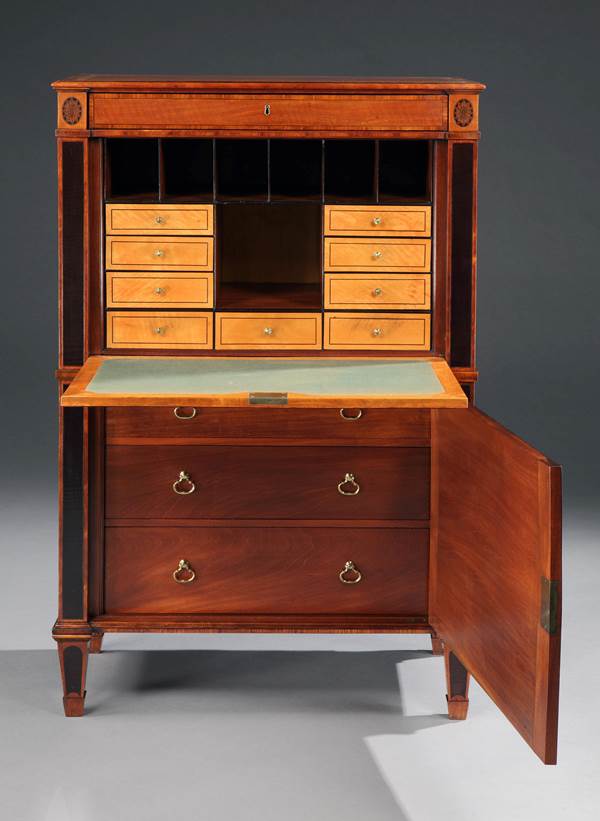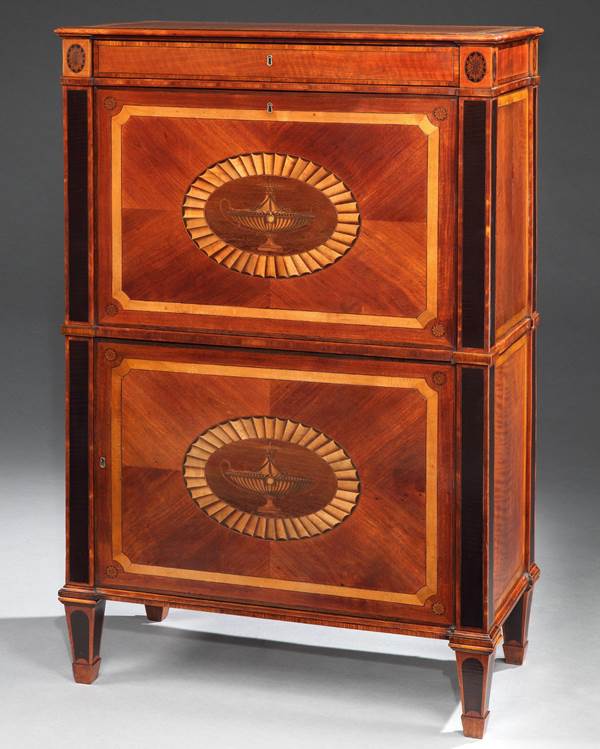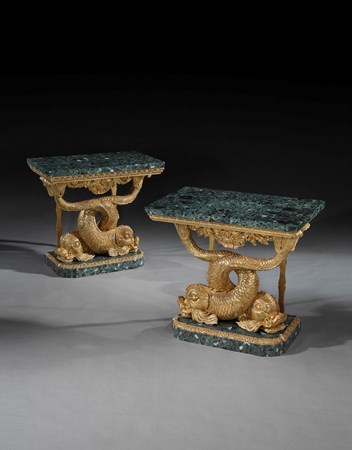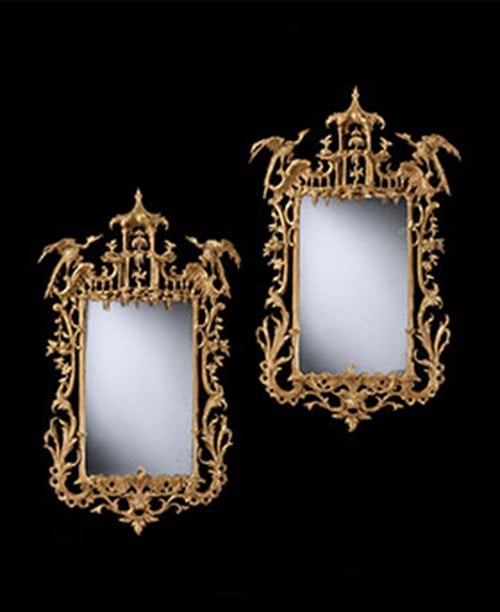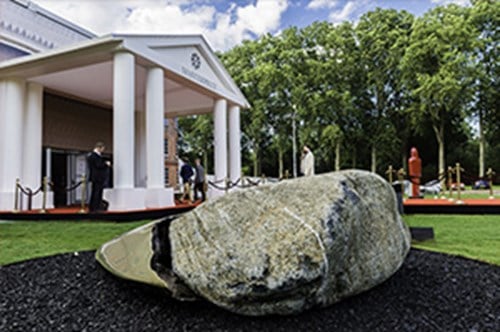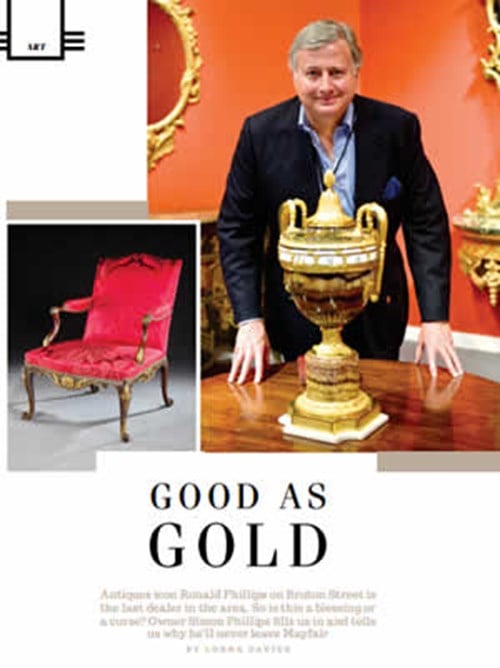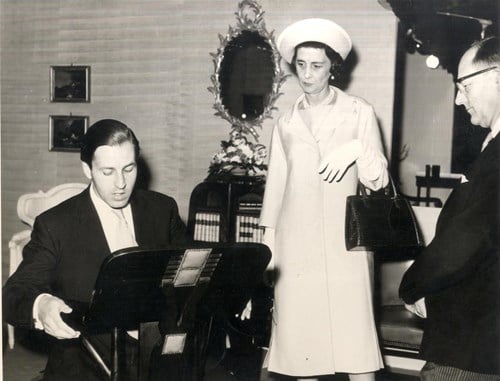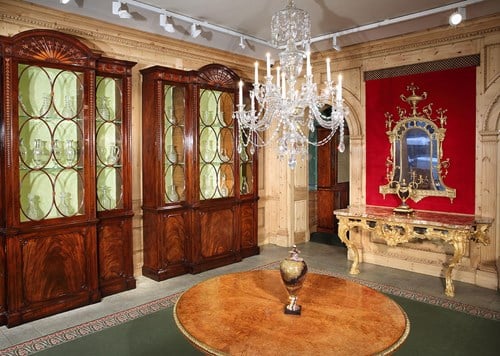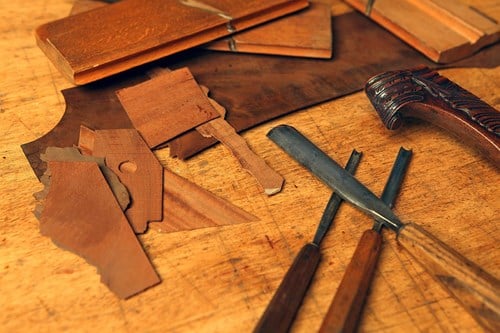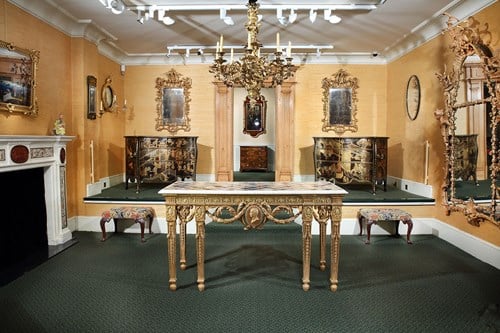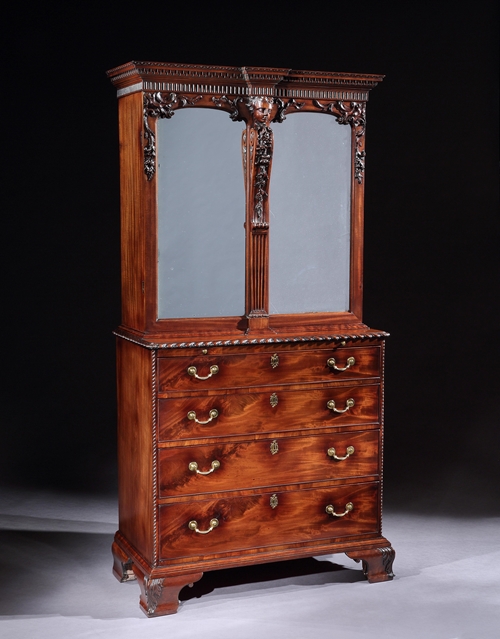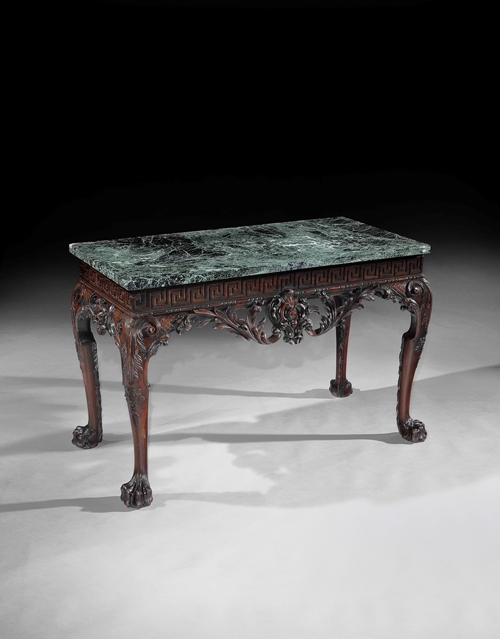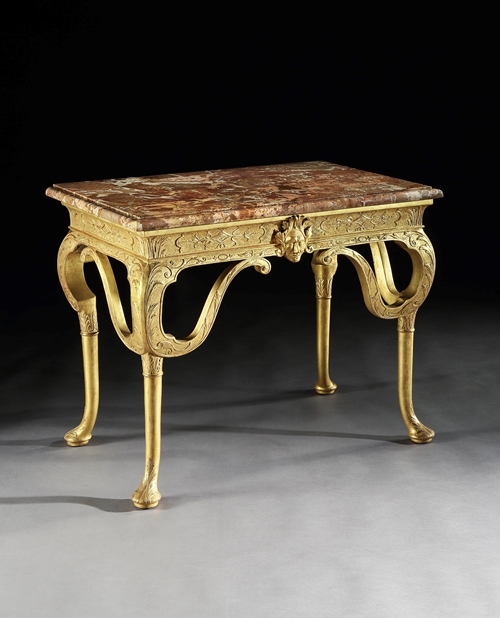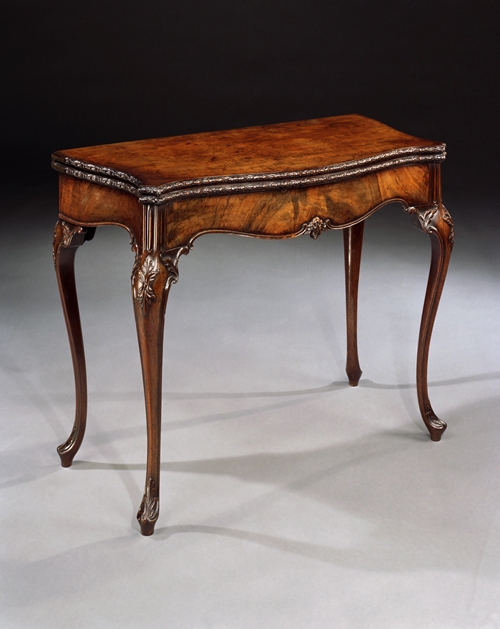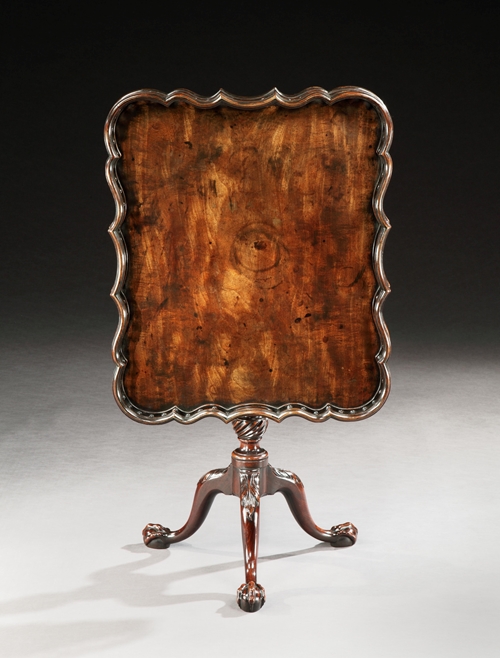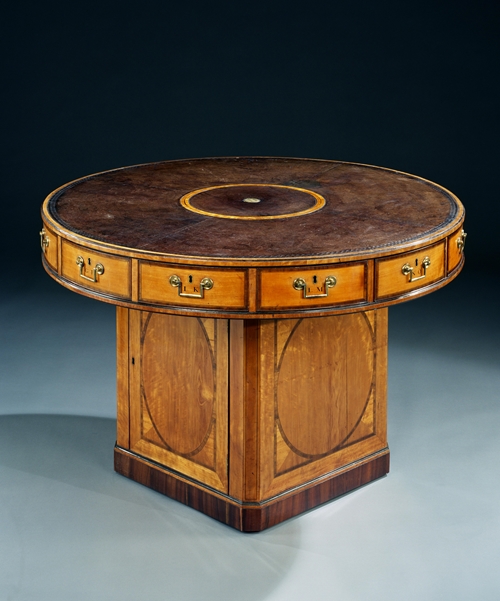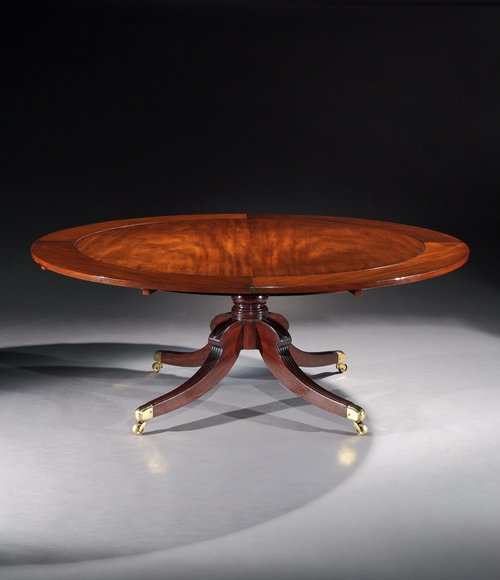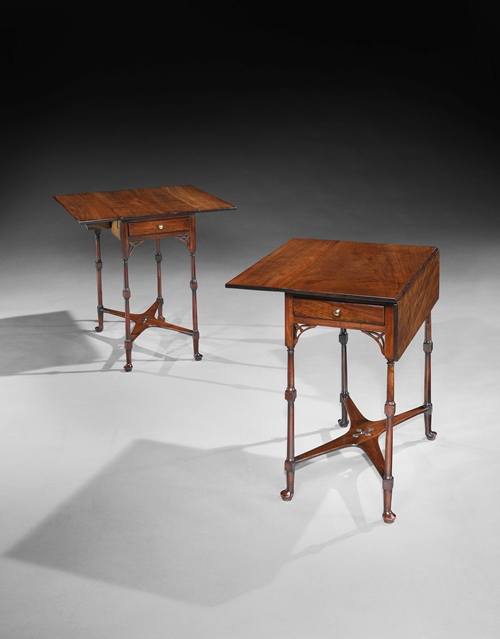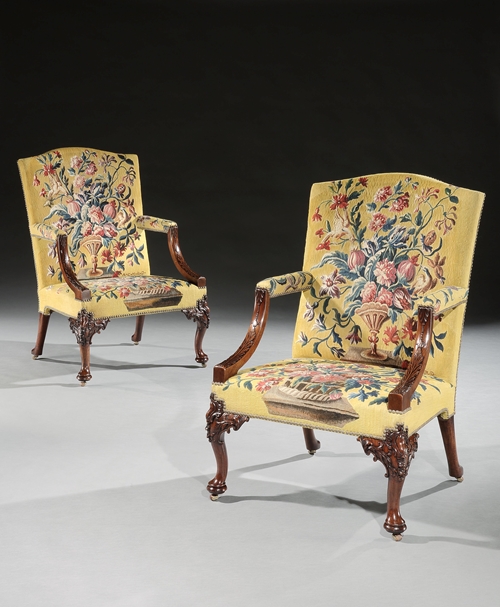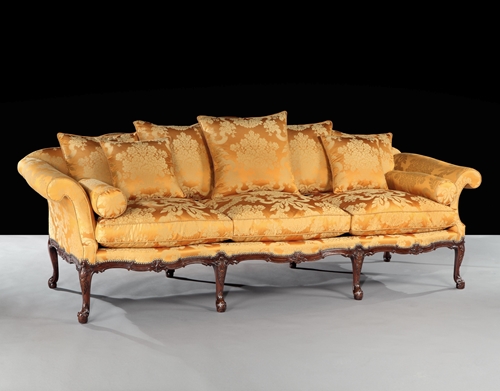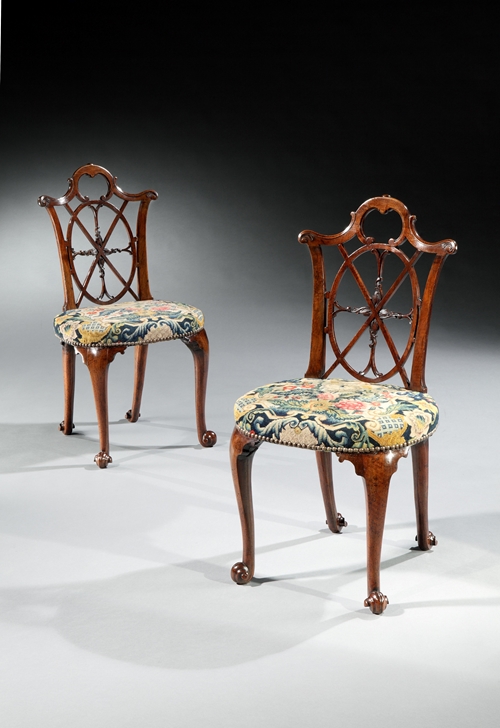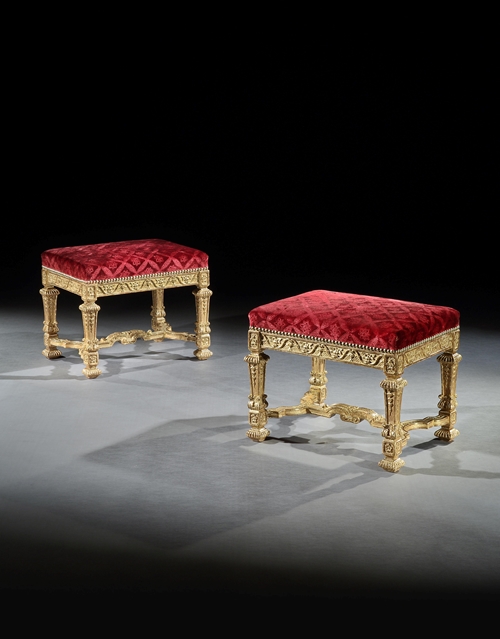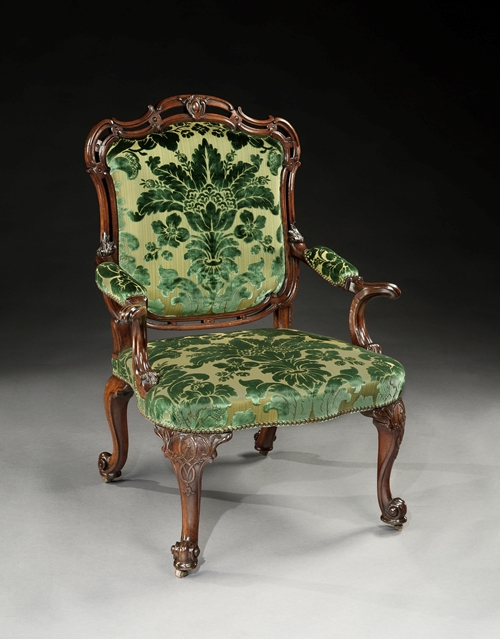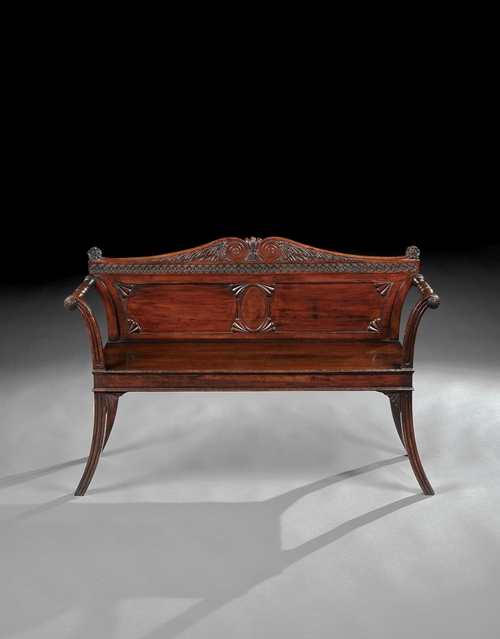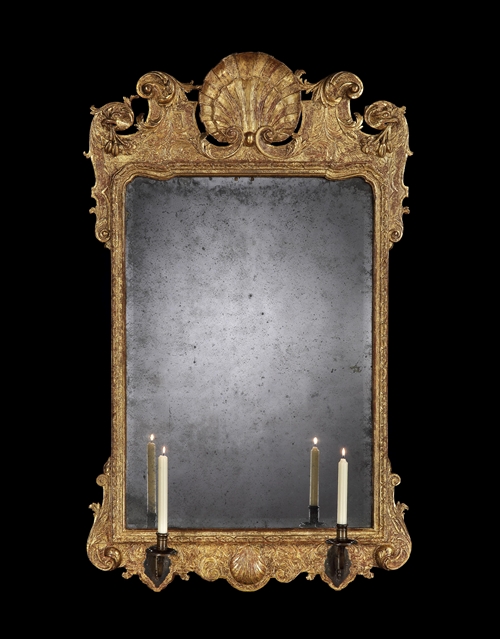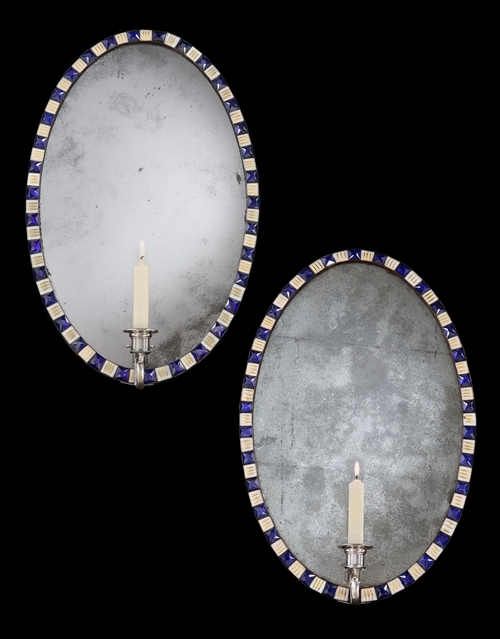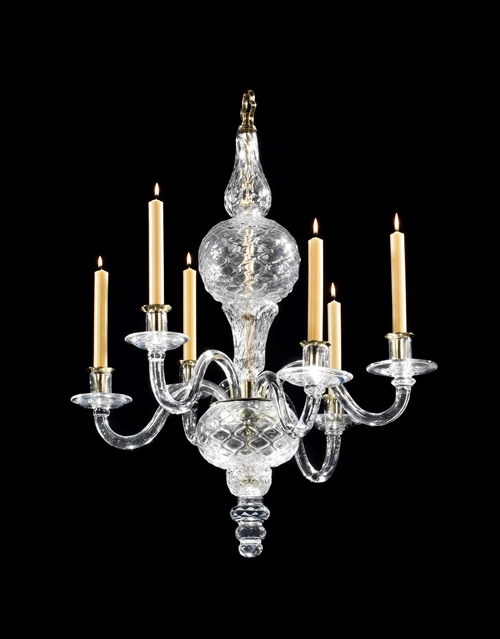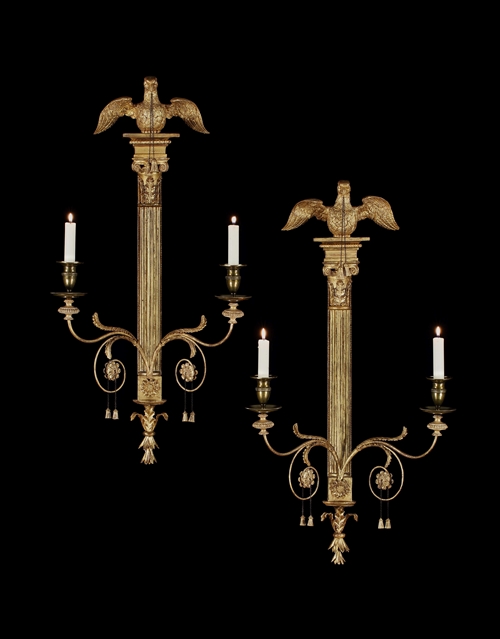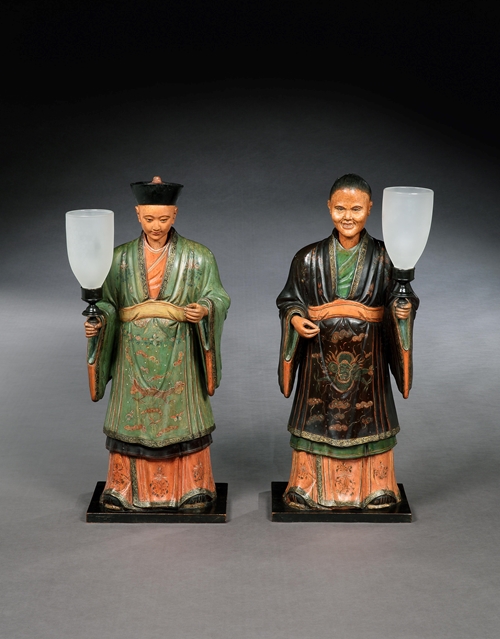An important and rare late 18th century satinwood marquetry secrétaire à abbatant attributed to Thomas Chippendale, having a rectangular moulded top with sycamore banding above a single drawer, cross banded in tulipwood and flanked by fine oval paterae inlays, above a fall front with sycamore banding with corner roundels and oval medallion inlay centred by a classical urn with fanned border, revealing a green baize lined writing surface and a fitted interior of nine sycamore veneered drawers retaining the original ornate brass knob handles, six pigeon holes and a central recess; above a single door with matching marquetry enclosing three graduated mahogany drawers retaining the original ornate brass Dutch axe handles; on square tapering legs terminating in block toes.
Note: Letters dating from 1855 by the previous owner Captain Meade, and addressed to Earsham Hall were discovered during restoration and are being retained with the piece.
It is worth pointing out that the secrétaire fall is fitted with an ingenious lead weight counterbalance, making opening effortless. This feature was used by Chippendale on several of his secrétaire commissions including the well documented Harewood House Lacquer secrétaire.
Literature:
Christopher Gilbert, The Life and Work of Thomas Chippendale, 1978, vol. I, p. 62, illus. 97.
Christopher Claxton-Stevens and Stewart Whittington, 18th Century English Furniture: The Norman Adams Collection, 1983, p. 125.
Antique Collector, November 1988, Norman Adams Ltd. trade advertisement, no page number; an almost identical piece formerly in the collection of Lady Fry at Oare House, Wiltshire, England.
Partridge Fine Arts, ‘Recent Acquisitions’, catalogue, 1991, pp. 62–3.
Mallett & Son Ltd., ‘The Age of Matthew Boulton’, catalogue, 2000, pp. 26–9; an almost identical example.
Christopher Gilbert in Jane Sellars (ed.), The Art of Thomas Chippendale, Master Furniture Maker, 2000, p. 30.
Jeremy Musson, English Country House Interiors, 2011, p. 140.
Illustrated:
Ronald Phillips Ltd, catalogue, 2012, pp. 60–63.
-
Provenance
William Windham (1708–1789), Earsham Hall, Norfolk, England.
By descent to Joseph Windham-Boyner (1739–1810), Earsham Hall.
By descent to William Windham-Dalling (1775–1864), Earsham Hall.
By descent to John Meade (1812–1886), Earsham Hall.
By descent in the Meade family, Earsham Hall.
Ronald Phillips Ltd., London, England.
Private collection, London, England.
Looking for something similar? YOU MAY ALSO LIKE
YOU HAVE RECENTLY VIEWED ITEMS
- CAN WE HELP YOU?
- +44 (0)20 7493 2341
- [email protected]
